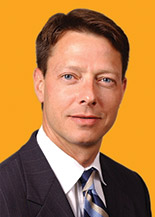Communities and their amenities are a bigger piece of the site selection equation today, as many millennials value work-life balance. They are driven to communities that have great assets, and ultimately communities where they can enjoy living outside of work.
Metros or Suburbs?
As site selectors, our job is to understand these new indicators and then identify places where we think millennials will migrate, today and in the future. According to Dr. Richard Florida, millennials are the happiest in urban areas. Citing a recent study, Dr. Florida notes that millennials are particularly the happiest in those cities with more than 250,000 residents.
In a 2009 study by Michigan State University, “Investing in your Future or Chasing your Past,” the Land Policy Institute identified public amenities in metropolitan areas that are strongly correlated with growth in population, jobs, and per capita income. For example, the researchers found that investments in green amenities in metropolitan areas increased population, jobs, and per capita income. “Green amenities” are investments in assets such as parks, trails, and water-related developments, which are all attractive to millennials. The study also found that low housing costs in metro areas were associated with job and population growth as millennials struggle pay off student loans. Also noteworthy is that colleges and universities are associated with population and job growth in metro areas as the transition from school to work is easier on millennials.

Connecting With the Community
Amazon’s HQ2 Request for Proposal is an example of this profound shift in site selection. While the company recites traditional site location factors, the winning community will differentiate itself through quality of life, labor force, and cultural fit. The chosen city will have demonstrated a connectivity between buildings, facilities, and community. It must be a place where Amazon can cultivate and incorporate the local culture and creativity into its operations. A place where proximity fosters a sense of place.
If you look at a selection of cities on Amazon’s short list, you’ll find the hottest markets in the country. The common denominator is that these communities have an abundance of amenities that attract young, educated millennials, e.g., creative music and arts scenes, dynamic restaurants, and lush parks and open spaces. Austin, Nashville, and Raleigh have an average age that is less than the national average of 37 years, the growth of the millennial cohort exceeds the national average of 7.5 percent, and the education attainment exceeds the national average of 30 percent for bachelor and post-graduate degrees.
Looking ahead, we know that more than one in three American labor force participants (35 percent) are millennials, which — according to a Pew Research Center analysis — makes them the largest generation in the U.S. labor force. Enterprises of all sizes must orient their focus — including site selection — to ensure they appeal to this growing and influential segment of existing (and potential) employees. Doing so successfully won’t be a happy accident. Rather, it will be the result of a detailed and rigorous analysis of what millennials desire in their workplace, the overall work environment, and amenities offered by the locale itself: plenty of creative outlets, attractive green/water amenities, vibrant food scenes, and music venues, to name a few. Getting this analysis “right” will lead to a happier, more productive millennial workforce and, in turn, enduring business success.


